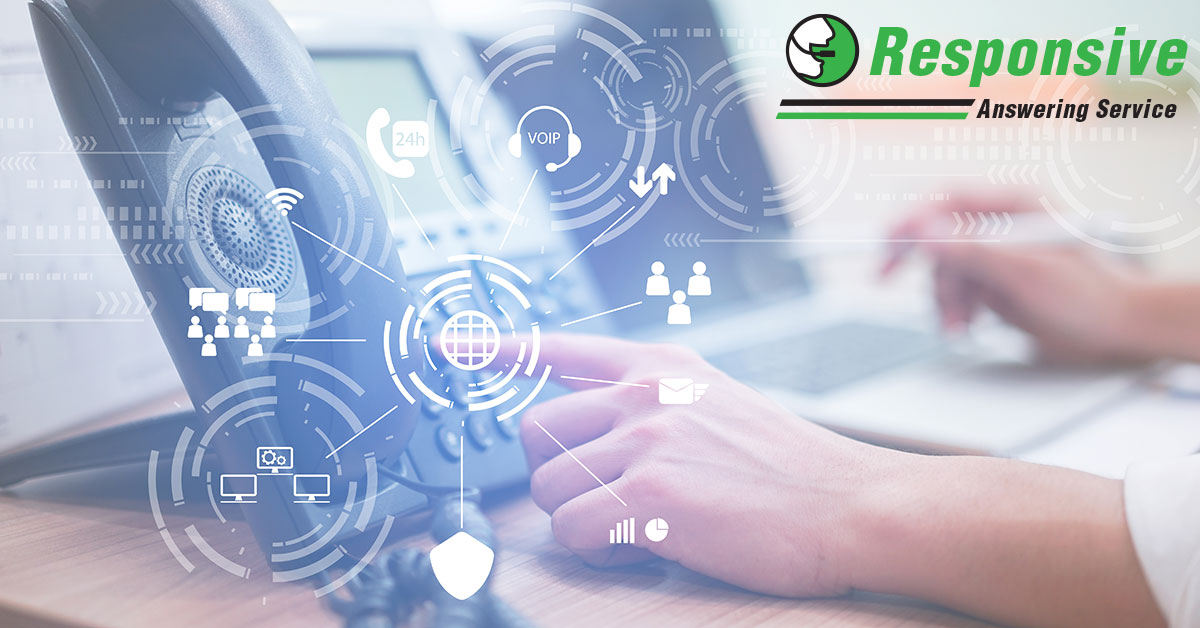
Answering service technology dates back to the history of the telephone. When small business started to emerge and the presence of more phones were not only in the home but in the office, the answering service business model was adopted. However, the answer service we know today is not the same as the service when it first started. Let’s take a look at how far we have come from the innovation of the telephone to the expansion of the answering service business model.
Alexander Graham Bell received the first patent for the telephone on March 7, 1876. Throughout the 1800s, switchboards were adopted, allowing operators to manually transfer incoming calls to an outgoing number. Operators in small towns often had the switchboards installed in their homes, where they answered calls 24 hours a day, 7 days a week – as well as holidays. Although technology has dramatically changed this function, these were, in effect, the first answering services.
When the Bell System’s new tone dialing technology was introduced in 1941, telephones had the capability of dialing area codes. We are now able to dial phone numbers by their geographical location because of this technology. The switchboard ensured the call was routed to the proper location and receiving party. This innovation and adoption of the switchboard started a brand new phase in answering service history.
However, it wasn’t until 1973, when Rockwell introduced the first automatic call system, that the answering service as we know it today began to emerge. This was followed by a period in the mid-1980s when there were many innovations in the industry, such as Predictive Dialing. Predictive Dialing dials a list of telephone numbers and connects answered calls to the agent on the other end. Eventually, this technology then evolved into the Interactive Voice Response (IVR), a technology that allows a computer to interact with humans through the use of voice and DTMF (Dual Tone Multiple Frequencies) via a keypad. These technologies increased the scalability, speed and efficiency of modern answering service operations. As these new technologies were emerging, other technologies such as pagers and eventually cell phones were increasing the number of messages and calls routed through to switchboards. Businesses needed to find a way to easily manage the increase in message and call volume.
The first contact center was founded in 1985 as a way to help solve for this increase in call volume. From 1987, the answering service industry experienced an acceleration in the number of centers with Private Branch Exchange (PBX) vendors actively competing for business.
In 1997, Genesys introduced the ACD suite and Nortel Symposium, which boosted the industry further. The ability to manage calls via software and faster computers increased the routing speed from the caller to the live agent on the receiving end. These contributions paved the way for the modern answering service. The technology was now in place to manage call volume from landlines, cell phones and pagers. Calls started to come through at different peak times and often-times after business hours. Software and server loads would work to observe these patterns effectively for businesses to know what times they would be in most need of an answering service, ultimately increasing the demand and need for these answering services.
This innovation built upon the latest technology to eventually create the modern day answering service model. Even today, the answering service industry continues to expand and evolve as new social media platforms like Facebook and Twitter are introduced. Answering services extend to answering social media messages and the other user touchpoints to make sure an always-on audience always has a response back from an answering service provider.
Today, the right answering service company must understand the history of the industry and keep pulse of new, emerging communication technology to ensure their agents are fully skilled to handle a variety of communication methods for their clients.
Responsive Call Center is the Right Answering Service
For over 40 years, Responsive Call Center has created and managed call flow for businesses in industries such as medical, legal, commercial services, real estate, construction, and countless others. Our live operators are available all day, every day to handle your business calls professionally per your instructions so you do not have to rely on answering machines or automated systems while providing customers the service they expect.
Contact us to find out more on how we can help you best manage the calls that are most important to the future of your business.


















 Receive Your Free Consultation
Receive Your Free Consultation